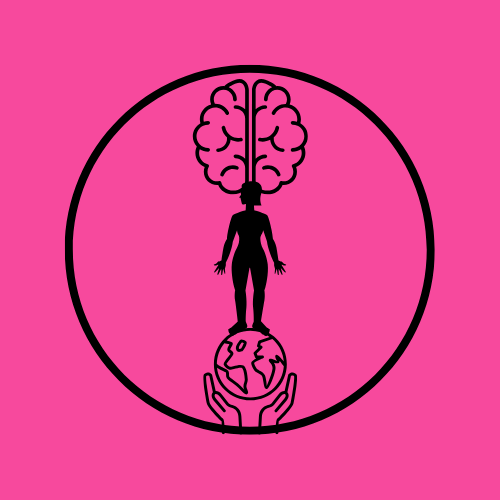Embodied cognition is the idea that the brain and the body work together to create thought.
It’s a theory that combines philosophy, psychology, and other disciplines to understand how the body and brain work together.
The field of Embodied Cognition underscores a fundamental truth: we are not minds housed in bodies but whole beings whose mental and physical processes are linked.
This perspective not only enriches the practice of body-oriented coaching but also holds transformative potential for education, healthcare, and personal development.
As science continues to explore the connections between the body and mind, the evidence grows: our lived, embodied experience is central to who we are and how we navigate the world. For coaches, educators, and anyone invested in human potential, embracing this truth offers a pathway to deeper insight, connection, and growth.
Embodied Cognition also draws from Systems Theory, which describes how interconnected elements of a system interact to create coherence and integration. In humans, the interplay between neural networks, physiological processes, emotional states, and environmental interactions forms a dynamic, unified whole.
Key Principles of Embodied Cognition
- Body as an Active Agent: The body is not just a passive recipient of information, but an active participant in the cognitive process, influencing how we perceive and interact with the world.
- Sensorimotor Experience: Cognition is grounded in our sensory and motor experiences, meaning that our knowledge and understanding of the world are shaped by how we perceive and act in it.
- Interaction with the Environment: The environment plays a crucial role in shaping cognition, as our bodies interact with and are influenced by the surrounding world.
- Evolutionary Perspective: Embodied cognition suggests that our cognitive abilities evolved to enable us to interact effectively with our physical environment.
This perspective dismantles the brain-body dichotomy, proposing instead that our cognition is distributed across bodily processes and environmental contexts. For instance, research in affective neuroscience reveals how emotions are not just brain phenomena but are regulated and experienced through bodily systems, such as the autonomic nervous system and hormonal pathways.
Embodied cognition origins
It is a theoretical and empirical perspective on cognitive sciences that challenges traditional theories on how human beings think. As philosopher Mark Johnson (2007) describes, traditional cognitive science works from the core premise of the “computer-brain analogy”. Basically, this analogy implies that a computer is an adequate model for understanding the brain, the brain being identified with the human cognitive apparatus (“computer”) that processes information (input) and directs output for the body and environment.
Examples:
Spatial Cognition: Embodied cognition is important for understanding how we develop spatial knowledge and navigate our environment.
Language: Our ability to understand and use language is rooted in our physical experiences and actions.
Abstract Thought: Even abstract concepts are grounded in our sensorimotor experiences, allowing us to form mental representations and make connections.
The four E’s
The “4E” approach to cognition argues that cognition does not occur solely in the head, but is also embodied, embedded, enacted, or extended by way of extra-cranial processes and structures.

Here are some real-life examples of embodied cognition:
- Feeling warmer when holding a hot drink:Studies show that holding a warm drink can lead to feeling more generous or warm towards others, illustrating how physical sensations can influence social judgments.
- Perceiving a distance as farther when burdened:When carrying a heavy backpack or feeling tired, we tend to perceive distances as longer than when we are not burdened, showcasing how our physical state impacts our perception of the environment.
- “Over your head” metaphor:The phrase “over your head” can evoke actual feelings of being overwhelmed or drowning, demonstrating how abstract concepts are grounded in physical experiences.
- Language and Embodiment:The way we use language often reflects our physical experiences. For instance, the phrase “lightbulb moment” suggests a sudden understanding, which is linked to the physical act of a light turning on.
- Gestures and Learning:Using gestures while learning can enhance understanding and retention, as the physical act of gesturing can help solidify concepts in memory.
- Body-Brain Connection in Sports:Skilled athletes might perceive a golf hole as larger than less skilled players, illustrating how skill level and task demands can influence perception.
- Embodied Metaphors:We use metaphors that are grounded in our physical experiences, such as “he’s got a heavy heart” or “she’s got a light touch,” where abstract concepts are expressed through physical sensations.
- Embodying the information:Having students act out the solar system planets or pretend to be carbon molecules can help improve learning compared to simply being told about them.
- Movement and fidgeting:Proponents of embodied cognition tend to be positive around fidget objects, as moving helps people to think.
Embodied Cognition has a huge benefit to Education
Embodied cognition is a concept in educational psychology. Belief that learning is not merely a cognitive process but fundamentally intertwined with physical actions and the environment.
This approach to learning suggests that cognitive processes are deeply rooted in the body’s interactions with the world.
As such, the brain, body, and environment are a complete system, with each component influencing and enhancing the learning process. This perspective offers a compelling argument for integrating movement, sensory experiences, and social interaction in teaching and learning activities.
Embodied cognition represents a diverse group of theories which investigate how cognition is shaped by the bodily state and capacities of the organism. These embodied factors include the motor system, the perceptual system, bodily interactions with the environment (situatedness),



